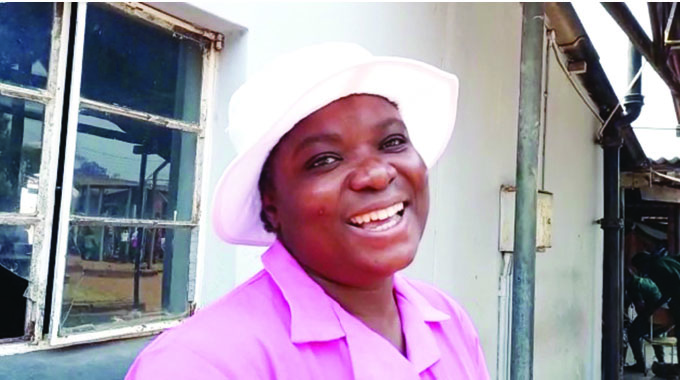EDITORIAL COMMENT: Sentencing standards must reflect what criminals do

Sentencing after a criminal conviction is largely left up to the judiciary, with the magistrate or judge called on to take into account a wide range of factors.
These include the severity of the offence, the need to deter those who are similarly tempted, and the personal circumstances that can mitigate or aggravate the blameworthiness of the convicted criminal.
But one additional factor, the general feeling of society, or at least the more thoughtful members of society, also needs to be taken into account, and the growing understanding about why criminals commit certain offences and what the true damage of a particular crime is.
Generally speaking, a set of sentencing standards emerges, largely by appeal courts looking into the sentences of lower courts and approving or rejecting changes to these sentencing rules.
As these standards, and sometimes vague standards emerge, they create precedents. The magistrate or judge then takes the standard and then adjusts up or down to suit the particular circumstances of the case and the blameworthiness and circumstances of the criminal who committed the crime.
But the setting of the standard that is then adjusted is often a hit or miss activity, and hence the importance of the sentencing conference organised this week in Kadoma by the Judicial Service Commission.
Judicial officers frequently state that sentencing is the hardest part of a criminal trial. The actual conviction or acquittal follows sufficiently well-known and strict rules that almost any reasonable person can follow; the rules of whether there is enough evidence for a conviction.
In some countries ordinary people, empanelled into a jury, do this although a trained and experienced judge does explain how the law is applied in the particular case and does break down the evidence so that they can answer intermediate questions as they move to the final answer.
When we come to public opinion and changes in perception among judicial officers, a very good example is rape.
At independence the standard sentence for rape was less than two years, unless there was in colonial times a racial element, and even when a child was raped the criminal could still escape with less than three years.
A lot of the problems was perception, among police, prosecutors and judicial officers, that somehow the woman or girl had “asked for it”, with irrelevant questions of dress and the like being asked, and the crime seen as just a man going a bit far in the sort of pressure that was otherwise acceptable.
A major backlash saw a campaign, backed by the recent appointment of Telford Georges of the West Indies where long jail terms for rape were the norm, to fix the whole problem, starting with the errors in perception.
This campaign succeeded to a large degree, rape being seen as among the top end of crimes of violence, in the same bracket as attempted murder, and with the victim never blameworthy.
The prime motive for rape was a desire to hurt and humiliate, and the sexual elements were simply one of the ways of doing this.
Sentences tripled almost overnight. They have stuck there now for almost four decades, and there is a growing feeling that we need another rethink.
Other examples of a standard sentence needing to be changed to fit the crime in new circumstances came when a judge of the High Court increased the sentence for car theft from a year or two to seven years, the changed circumstances being far more thefts and the near impossibility at that time of replacing the car, even if it was fully insured.
The Supreme Court on the automatic appeal when a new precedent was being set agreed.
In fact, that change in car theft sentencing helped drive new standards for rape sentencing. A teacher raped three eight-year-olds and was sentenced to around three years at the same time the first car thief was given the new seven-year standard.
The total incongruity of the rape sentence was highlighted as everyone saw that crimes of violence against the person were far more serious than crimes against property.
One problem in the system where the courts in effect through precedent set sentencing standards is that these are often not opened for revue in practice.
Where a magistrate or judge gives too high a sentence the need for fair justice automatically in most cases leads to a review or appeal, and a cut in the sentence to something more in line with established precedent, unless the appeal court agrees a new precedent needs to be set.
But when the sentence is too low in the eyes of many, the system is a lot less precise. While at times a higher court can pronounce that a sentence does not meet the needs of justice, this is rare.
At the same time a lot of serious criminal trials have been moved to the regional magistrates, which is fair enough, but the old link between trial judges and appeal judges has been eroded. Again this is something that a sentencing review, such as we are seeing, can be important.
While we need sentences to be set by judges and magistrates in cold blood, without emotion, and while we must never allow mob rule to set sentences, informed public opinion, and we stress the need for this to be informed, should be among the factors that help judicial officers determine sentences.
One major evolving trend is the need to come down ever more heavily on crimes of violence and here President Mnangagwa, legally trained himself and well informed, was speaking for all of us when he wanted those setting sentencing standards and those passing sentence to be ready to push up sentences for robbery and crimes against women and children.
Robbery is rising, and people feel so helpless when faced with the extreme violence offered by robbers. Of course the police need to first catch the robbers, and they are doing better, but the courts need to play their part as well.
Crimes against women and children are certainly being reported a lot more often, although there could be doubt about whether this is a result of more such crimes or the result of women and children learning of their rights, exercising their rights and of the police now prepared to listen to reports of these crimes without seeming to blame the victim.
At one time a majority of rapes and gender-based violence were not reported, and this might still be the case, but far more victims of these crimes are now ready to report and far more families and communities are prepared to report violence against children.
More needs to be done in this area if we are to kill the crimes, although expanding the envelope for sentencing is, as the President noted, one area that can help diminish the number of cases.
No one, let alone a judge, is ever going to minimise the difficulty of generating an appropriate sentence, but some pointers are important. One is obvious, in that the standards need to be more widely applied.
This means in many cases the sort of standard generated in a new precedent confirmed on appeal needs to become quickly known and applied.
The other is the need to strengthen the gap between crimes of property and crimes of violence. Sometimes we desire higher sentences for these crimes, and sometimes those are justified.
But the addition of violence should take the crime into a whole new area. The most important fact about a robbery is not the goods stolen, but the fact that the robber used or threatened violence.








Comments